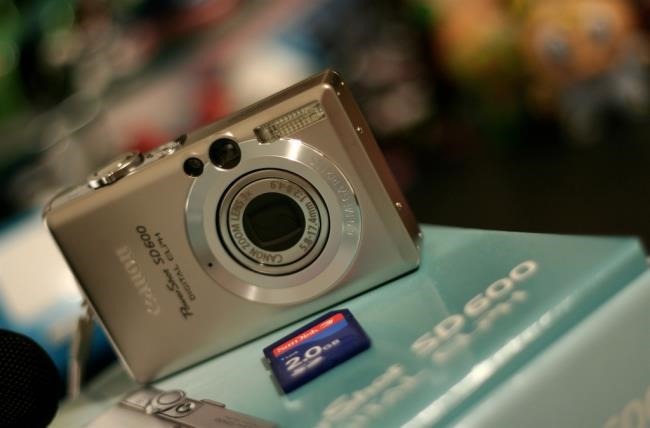Why does USB drive, memory card ... use FAT32 format instead of NFTS?
Microsoft created NTFS to improve FAT32 in many ways. To understand why Windows uses NTFS, we take a look at the limitations of FAT32 , and how NTFS fixes these problems. Please refer to the following article of Network Administrator.
Explore more:
-
What is FAT32, NTFS, exFAT format?
-
Partitioning file manager choose NTFS or FAT32?
-
Some basic knowledge about FAT32 and NTFS
- FAT32 only supports files up to 4GB in size and partitions up to 2TB in size. In case if your file is larger than 4GB, you cannot save this file to a FAT32 format hard drive. If you have a 3TB hard drive, you can't format this hard drive to a FAT32 partition . Theoretically, NTFS has a higher limit.
- On NTFS , changes are saved to a note before being executed. Suppose in case if the computer has lost power when recording a certain file, the NTFS system will not need to scan the entire partition to find and recover errors such as FAT32 , but only need to read the "notes" again. "to find and redo the currently performing tasks to bring the hard drive back to a stable state.
- FAT32 does not support file permissions. With NTFS , you can assign permissions to access, edit or delete files to increase system security.
With NTFS , system files can be set to read-only mode, preventing normal applications from being accessed. Users may also be restricted from accessing other users' files on the same computer or network system.
There are many reasons for Windows to use NTFS for system hard drives: NTFS is safer, more powerful and supports larger file sizes.

Memory cards and USB devices do not encounter problems such as hard drives
- USB or SD card definitely has a capacity of 2TB, so you don't need to worry about capacity limits. Sometimes you want to copy a file larger than 4GB into the drive - in this case you can use the drive format as NTFS.
- USB and memory card do not need to store changes like hard drive. Even recording changes will increase the read / write count on USB and memory cards, reducing their lifespan.
- USB and memory card are portable storage devices, so you can disassemble, used on many smart computers / devices. Therefore, file permissions will make using them more difficult.
In addition, decentralization on USB and memory cards also has some problems. For example, a USB file is decentralized specifically for user accounts on your laptop. When you remove this USB and plug in other laptops, any user with another similar account name will be able to access the file. Thus, decentralizing access on USB does not increase security, but only makes things more complicated.
In addition, NTFS will also take up more space to store more system files, so using NTFS will reduce the usefulness of low-capacity memory cards.
In short, you should only format USB and memory cards to SD format if you need to use them to copy files larger than 4GB. However, the read / write speed of the memory card and USB is usually slower than that of external hard drives, so perhaps you should consider investing in an external hard drive to copy large files.

Compatibility
One of the most important reasons you should not use NTFS on USB and memory cards is their compatibility with non- Windows devices.
Mac : Mac OS X supports reading files on a fairly complete NTFS hard drive, but in default Mac settings cannot write files to NTFS partitions . You need to use additional software or change some customizations.
Linux: Only Linux versions in the last few years can support read and write NTFS well. Older versions often fail in this process.
Camera, smartphone, TV, printer : Currently, there are many electronic devices that support reading files on USB ports and memory cards. All of these devices support FAT32 format, which means you don't need to worry that "My TV can't read USB" if it uses FAT32 format. Only a few devices support NTFS , and in order to ensure the best compatibility, you should still format the memory card and USB drive in FAT32 format .

In general, you should keep the file system for your storage device in the same way as the manufacturer's settings. Keep your 3TB hard drive in NTFS format and keep it in your memory card, USB in FAT32 format.
You should read it
- What is the difference between exFAT, FAT32 and NTFS?
- What is FAT32, NTFS, exFAT format?
- How to Format a Memory Card Using a Windows Computer
- The best memory card format software for Android phones
- How to fix errors that cannot format memory card
- How to format the memory card directly on your Android phone
- Top 3 best memory card format software
- What are the exFAT, FAT32 and NTFS formats and how are they different?
May be interested
- Instructions on how to fix unformatted memory cards are simple and effective
 explain the reasons why the memory card cannot be formatted, how to check the ability to format the memory card as well as instructions on how to fix and fix the error of the unformatted memory card.
explain the reasons why the memory card cannot be formatted, how to check the ability to format the memory card as well as instructions on how to fix and fix the error of the unformatted memory card. - Standard new SD Express memory card format, maximum capacity of 128TB
 sd memory card is added with pci expree and nvme interface to allow storage capacity up to 128tb and data transfer rate of 985 mb / s.
sd memory card is added with pci expree and nvme interface to allow storage capacity up to 128tb and data transfer rate of 985 mb / s. - What to do when an error occurs 'Android cannot format SD card'?
 'android unable to format an sd card' is a common error that occurs on platforms, not just android. when encountering this error most likely your data on the memory card will be lost. fortunately, however, you can format the sd memory card and continue using it.
'android unable to format an sd card' is a common error that occurs on platforms, not just android. when encountering this error most likely your data on the memory card will be lost. fortunately, however, you can format the sd memory card and continue using it. - How to Format SD Card
 this article shows you how to format an sd card - a type of removable memory often used in cameras, tablets, and phones. formatting any drive will delete files stored on it; so, remember to back up files in your sd card (such as photos or videos) before formatting.
this article shows you how to format an sd card - a type of removable memory often used in cameras, tablets, and phones. formatting any drive will delete files stored on it; so, remember to back up files in your sd card (such as photos or videos) before formatting. - Nano memory card memory card, solution for smartphones not equipped with memory card slot
 at the launch of the mate 20 smartphone launch in london, huawei mate introduced a new enhancement to storage memory. it is nano memory card, memory card in the format of a nano-sim card, with a capacity of up to 256gb.
at the launch of the mate 20 smartphone launch in london, huawei mate introduced a new enhancement to storage memory. it is nano memory card, memory card in the format of a nano-sim card, with a capacity of up to 256gb. - What are the exFAT, FAT32 and NTFS formats and how are they different?
 the commonly used hard drive formats are ntfs, fat32 or exfat, if you do not know the difference between these formats and should choose the format for your hard drive, please read the article below.
the commonly used hard drive formats are ntfs, fat32 or exfat, if you do not know the difference between these formats and should choose the format for your hard drive, please read the article below. - The company has created an SD memory card that can store data on par with the hard drive you are using
 have you ever been annoyed about how much gb to buy an sd memory card, and then have to consider what to keep and delete it to clean up the storage space on the card?
have you ever been annoyed about how much gb to buy an sd memory card, and then have to consider what to keep and delete it to clean up the storage space on the card? - How to Format a micro SD card
 micro sd is a very small memory card, often used to add more memory to devices such as cameras, gps devices and mobile phones. in most cases, you can format a micro sd card using the device's built-in commands. however, you can also format the micro sd card right on your windows or mac computer.
micro sd is a very small memory card, often used to add more memory to devices such as cameras, gps devices and mobile phones. in most cases, you can format a micro sd card using the device's built-in commands. however, you can also format the micro sd card right on your windows or mac computer. - How to fix non-formatted memory card by using the software
 when using the phone, users need to reformat the memory card for a variety of reasons, but when done, it fails. so how to fix this error?
when using the phone, users need to reformat the memory card for a variety of reasons, but when done, it fails. so how to fix this error? - Instructions to format USB Pendrives with Command Prompt
 by default, windows users can usually format the hard drive, memory card, or usb by right-clicking on it and clicking the format option.
by default, windows users can usually format the hard drive, memory card, or usb by right-clicking on it and clicking the format option.










 Tips for reformatting USB to run on Windows, Linux, Mac and many other operating systems
Tips for reformatting USB to run on Windows, Linux, Mac and many other operating systems Learn about the safe anti-virus mechanism on the Vietnamese military
Learn about the safe anti-virus mechanism on the Vietnamese military How to create USB boot versatile, USB rescue by DLC Boot
How to create USB boot versatile, USB rescue by DLC Boot How to set up a USB-only computer, increase safety
How to set up a USB-only computer, increase safety Top 10 best USB protection software today
Top 10 best USB protection software today Ways to set USB passwords for data protection
Ways to set USB passwords for data protection